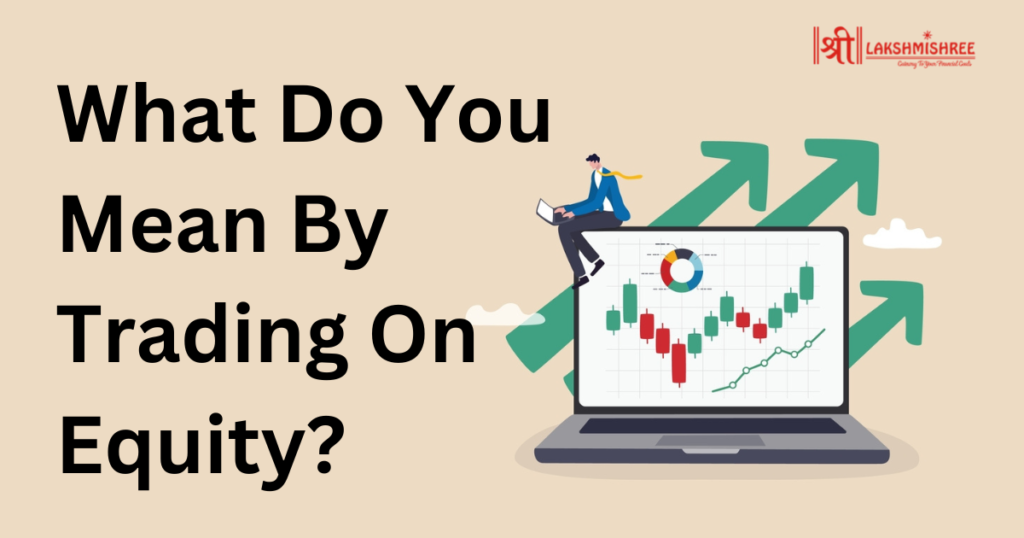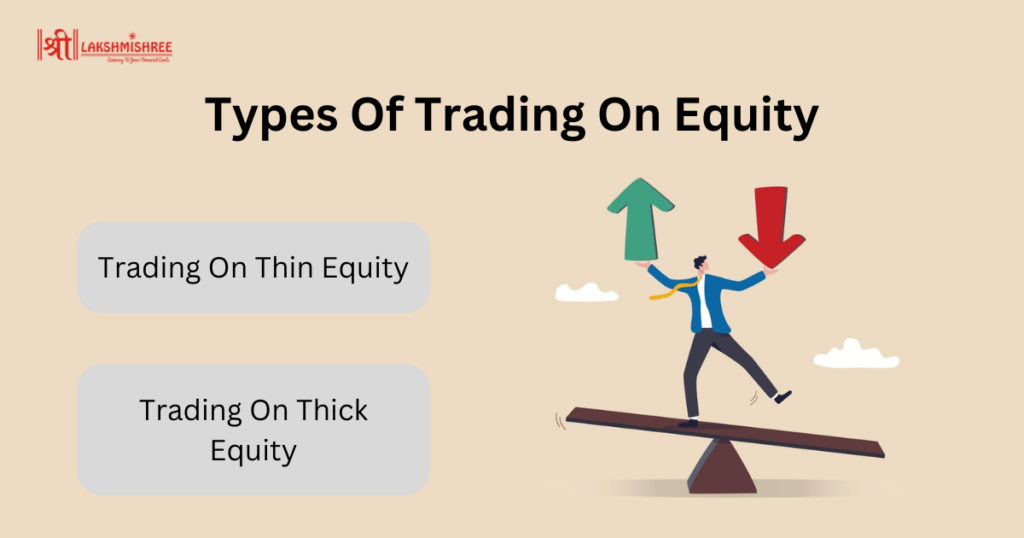
There are many ways through which companies secure funds. One such is Trading on Equity which is also known as Financial Leverage. This Trading on Equity is not the same as equity trading as the former does not involve equity at all and it produces gain for the shareholders of the company.
Trading on equity means when debt instruments such as debentures, bonds, preference shares, etc. are issued by a company to acquire additional funds. This fund is then used to purchase a new asset like land or invest in new avenues which may give them returns in the future.
By applying this strategy, the company aims to increase the shareholder’s equity per share (EPS) which is the return the shareholder gets after investing in the company.
It is also referred to as financial leverage, both of these terms mean that the company is leveraging its financial standing to procure debts which will raise the shareholder’s EPS. The rise in EPS will then in turn raise the value of the share.
If in any case, this strategy does not work for a company as they had thought it would it would decrease the shareholder’s income.
An entity can acquire funds either through equity or capital. If they use debt instruments, they will have to pay an interest rate that is less costly than equity capital. Some of the objectives of using this strategy to gather funds are:
It can be done in two ways depending on the debt and equity capital of a company. These two types are:

Thin Trading on Equity – When a company’s equity capital is lower than the debt is trading on thin equity. For Example – if a company has an equity capital of ₹ 1000 crore and debt capital is ₹ 1500 crore it is trading on thin equity.
Thick Trading on Equity – When the company’s equity capital is more than the debt capital it is said to be trading on thick equity. For example – if the company has an equity capital of ₹ 1000 crore and debt capital of ₹ 800 crores it is trading on thick equity.
Some of the benefits of using the this strategy are:

Trading on Equity has some disadvantages along with advantages. One of them is that a company’s earnings are not stable, which may overwhelm them at the time of interest payment as they would not have earned sufficient returns. And if after using the funds they are still not earning returns the company would start making losses.
Another disadvantage is that the rate of interest can rise at any time during the process of the repayment which gives the company an extra burden by paying more interest than the entity had originally thought.
The main effect of this way of acquiring funds is the fluctuation of EBIT (Earnings before Interest and Taxes) is maximized on the company’s Equity Per Share (EPS). The greater the debt in a company’s capital the more variation is in the EPS in relation to the fluctuation in EBIT.
Trading on equity is often used by very well-established companies and has steady profits. This strategy is considered a success when the returns generated on the amount are higher than the cost that has been incurred to acquire it and service that debt in the future.
Let us understand this with an example – Company X uses the trading on equity strategy to collect funds through various debt instruments of ₹ 200 Crores and uses this fund to buy an asset say, a factory. They have to pay interest at the rate of 10% per annum. Every year the company will have to pay approx. ₹ 20 Crores to the lenders.
In the above case, the trading on equity strategy will be profitable when the company returns are higher than ₹ 20 Crores.
The strategy can only be called successful when the company has earned more than what it is required to pay for the debt in way of interest every year.
The terms Trading on Equity and Equity Trading are often confused but are very different concepts. Some of the differences are:
Trading on equity is a means for a company to collect funds without changing the ownership ratio of the company. It may also result in uneven earnings as the fund is used to venture into new avenues or buy an asset, that will give returns but not the same amount every year.
This strategy is more used by the managers of the company rather than the traders as it gives the company a chance to increase its earnings. This works as a trade-off, a company by issuing debt instruments purchase new assets and then uses these assets to pay off the debt.
Before investing in a company that uses this strategy make sure that they are successful in using this method of acquiring funds.
Trading on equity is mostly used by managers of a company as it helps to enhance the earnings but it also increases the debt of the company.
This strategy generates high returns which increase the wealth and the shareholder’s equity per share (EPS).
The biggest risk a company can face is that the assets they purchased with the acquired funds are not giving sufficient returns.
The term financial leverage and trading on equity is the same. Financial leverage is the process of using debt to purchase new assets with the expectation that the returns will exceed the borrowing cost.
